Canadian Arctic
The T-MARS project focuses on the study of gossans in permafrost in the White Glacier region of Axel Heiberg Island, Nunavut (Figures 1 and 2), as analogs for gossans on Mars that may be related to paleo-hydrothermal systems. Our project objectives include:
- Identification and mapping of gossans on a regional scale using high-resolution satellite imagery
- Laboratory analyses to further investigate the composition and biosignatures of samples collected during fieldwork
Visit our interactive map !
Browse through our interactive map to visualize several geospatial data in our study area on Axel Heiberg Island or in the Canadian Arctic Archipelago. These data are some of the ones used by our Master's students!
You will have the opportunity to visualize:
- Geological maps
- High spatial resolution satellite images
- Topographic data (shaded relief, slope)
» Visit the interactive map
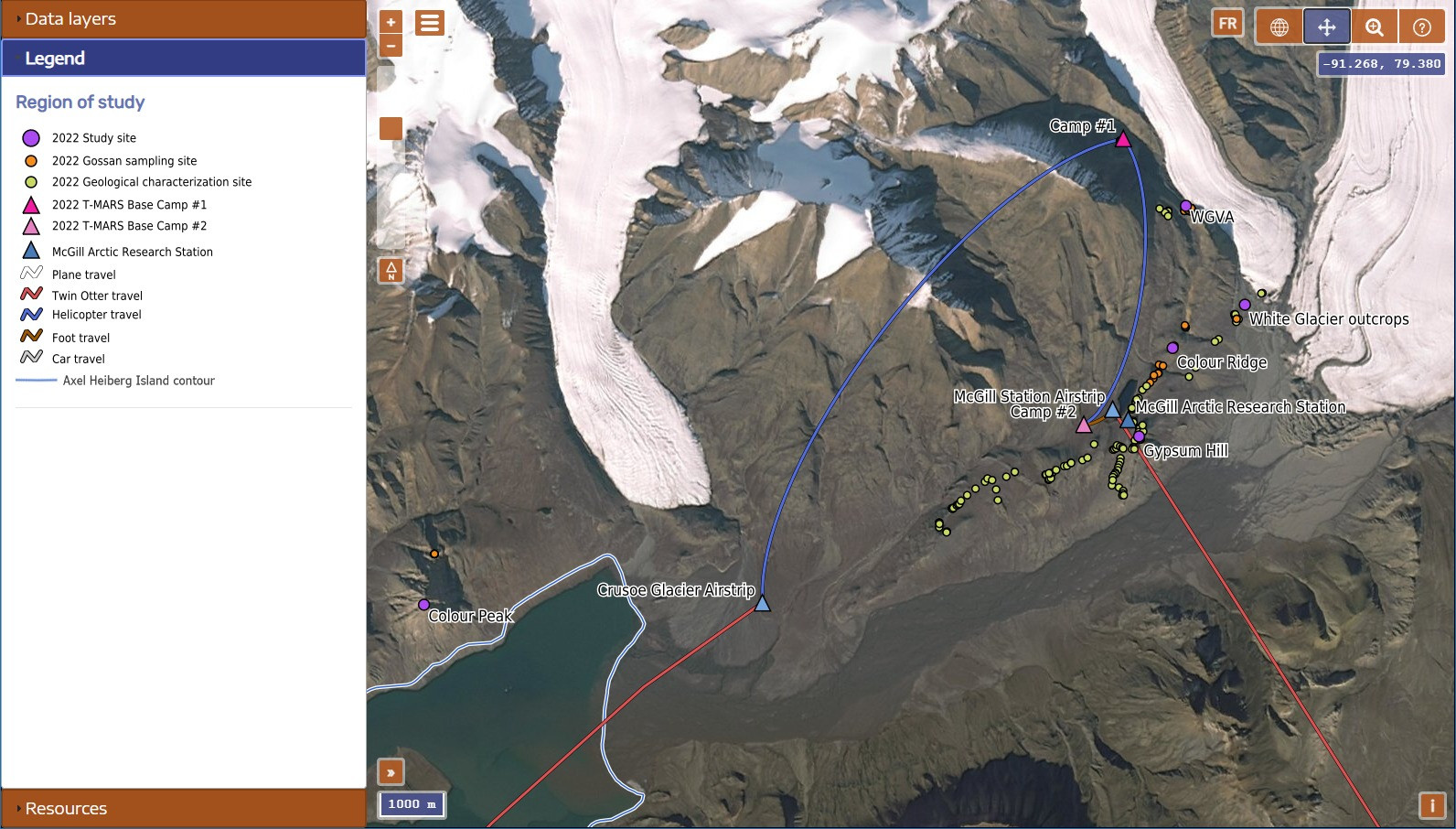
Preview of the interactive map.
Geological context of the Canadian Arctic Archipelago
Gossans are highly altered, iron-rich surface deposits. On Earth, these deposits form in a wide range of geological settings, but outcrops are generally only a few meters to kilometers in size. The gossans resting on permafrost in the sparse vegetation regions of the Canadian Arctic are natural laboratories for the study of sulphates and iron oxides identified on Mars [1,2]. A recent study of gossans in two different regions of the Canadian Arctic Archipelago, Victoria and Axel Heiberg Islands (figure 1) suggests a complex origin for deposits that form in a permafrost environment [3,4]. A key aspect of the study was the identification and mapping of gossans using WorldView-2 satellite imagery.
On Victoria and Axel Heiberg Islands, regional mapping of igneous intrusions in place in the Large Igneous Province (LIP) led to the discovery of gossans [2]. Locally, the morphology and stratigraphy of the gossans vary considerably, but their mineralogy always includes goethite, jarosite, gypsum and silica [5]. These alteration minerals have also been identified on Mars, from instruments in orbit or based on rovers [6]. On a local scale on Mars, the discovery of sulfate-rich sediments by the Mars Exploration Rovers has led to a renewed interest in jarosite as a key indicator of potentially habitable acidic aqueous conditions [7].
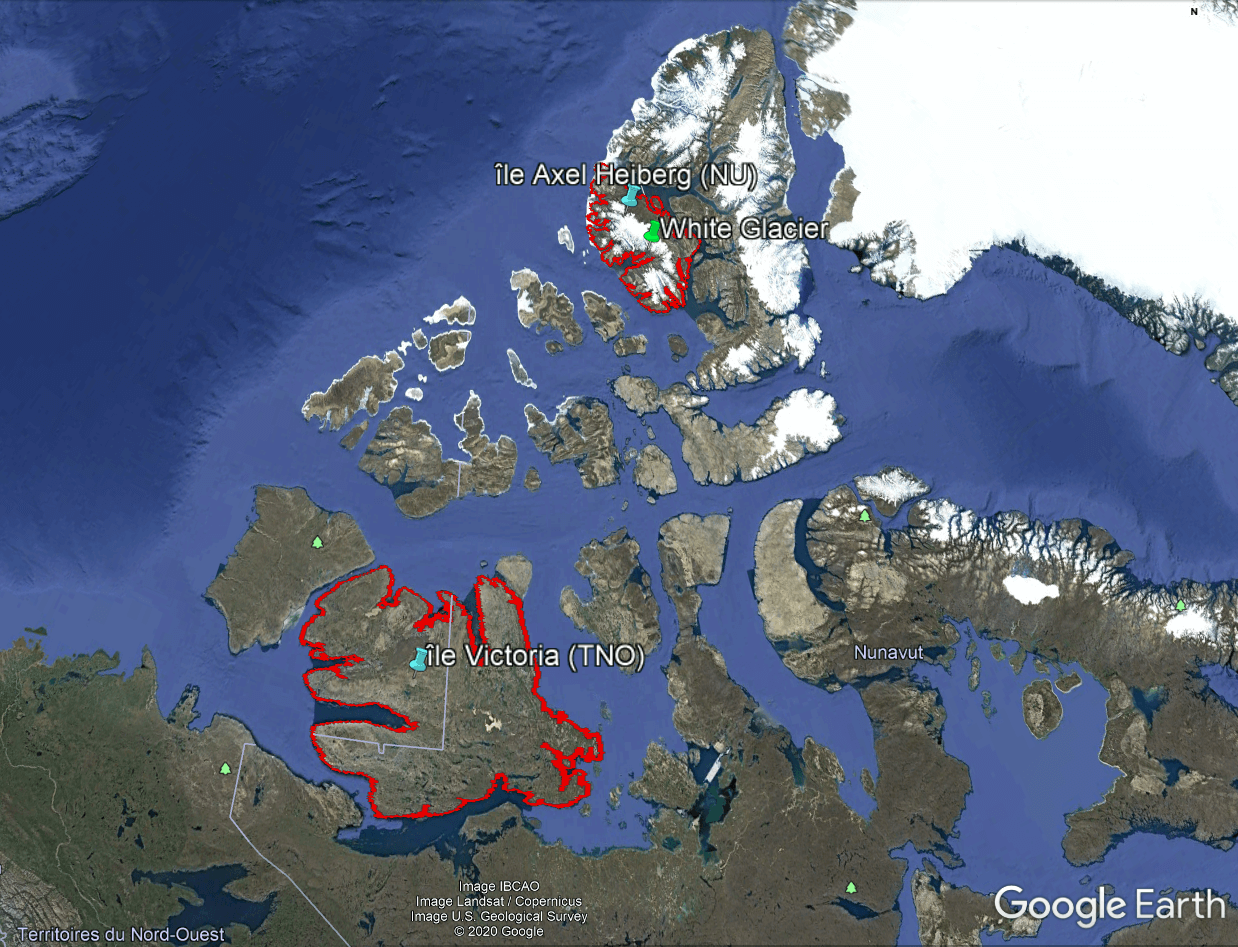
Figure 1 : Location of Victoria Island (NWT) and the White Glacier on Axel Heiberg Island (NU) in the Canadian Arctic. Google Earth.
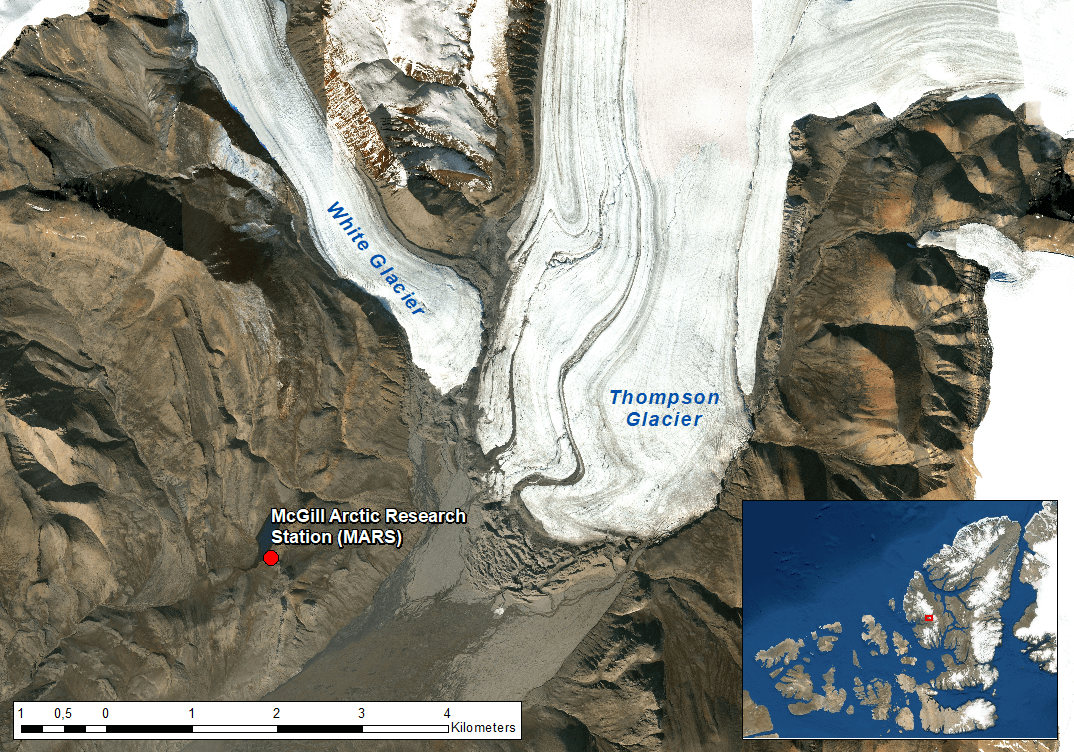
Figure 2 : Location of McGill Arctic Research Station, near White Glacier. Axel Heiberg Island, Nunavut. Basemap: ESRI.
A study site analogous to the planet Mars
It is proposed that minerals such as goethite, jarosite, gypsum and silica were formed when hydrothermal systems were active. The potential association of gossans with paleo-hydrothermal systems on Mars led us to select the White Glacier region on Axel Heiberg Island in Nunavut as an analogue site for this project (figures 2 and 4). In the White Glacier region, the association of continuous cold springs with nearby paleo-hydrothermal deposits (figure 3) suggests that both systems were fed by fluids originating from evaporitic structures [8]. Our hypothesis is that the gossans are linked to the deep hydrothermal system [9].
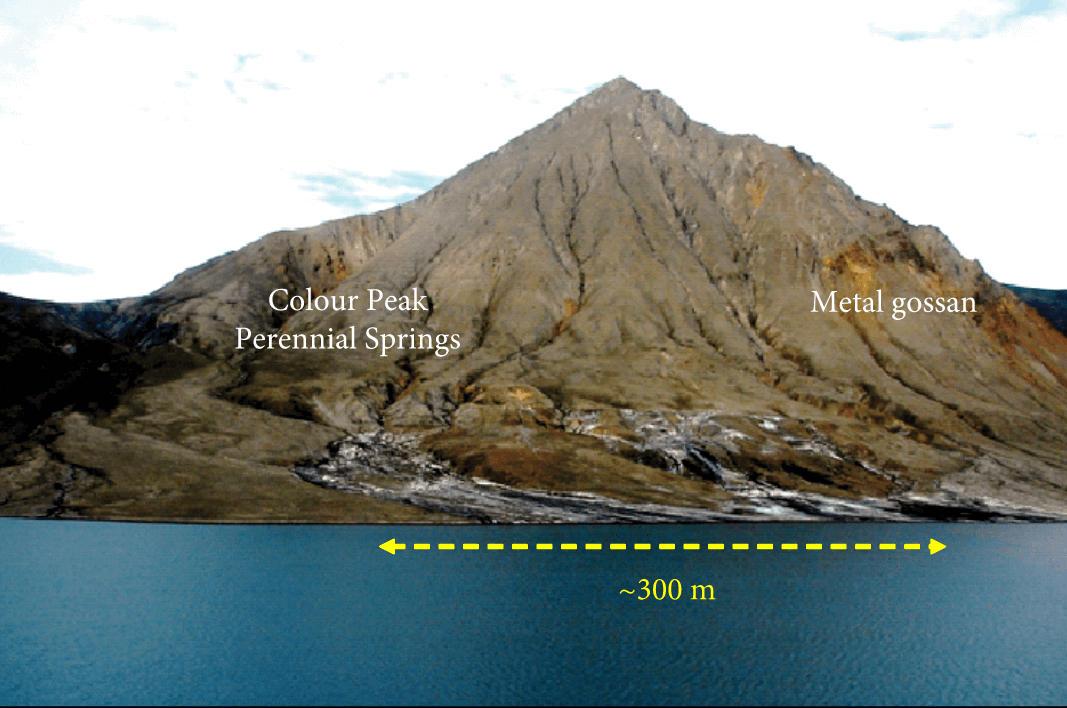
Figure 3 : Colour Peak Diapir and its perennial springs (left), Metal gossan (droite). Axel Heiberg Island, Nunavut. (Zentilli et al., 2019)
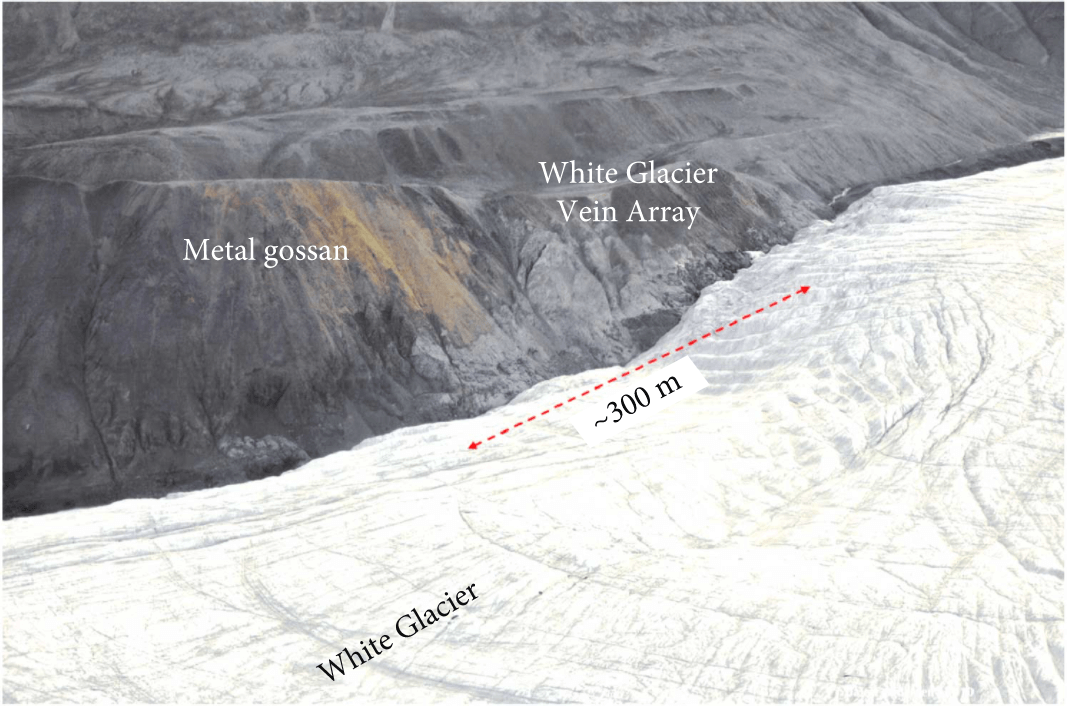
Figure 4 : Metal gossan near White Glacier. Axel Heiberg Island, Nunavut. (Zentilli et al., 2019)
References
Battler et al. (2013) Mineralogy of saline perennial cold springs on Axel Heiberg Island, Nunavut, Canada and implications for spring deposits on Mars, Icarus, 224(2), 364-381.
Peterson et al. (2014) Gossan Hill, Victoria Island, Northwest Territories: An analogue for mine waste reactions within permafrost and implication for the subsurface mineralogy of Mars, Earth and Planetary Science Letters, 400, 88-93.
Williamson et al. (2011) Comparative geological studies of volcanic terrain on Mars: Examples from the Isachsen Formation, Axel Heiberg Island, Canadian High Arctic, Analogs for Planetary Exploration, W. Brent Garry, Jacob E. Bleacher.
Percival and Williamson (2016) Mineralogy and spectral signature of reactive gossans, Victoria Island, NT, Canada, Applied Clay Science, 119, 431-440.
Williamson, M.-C. (ed.) (2017) GEM 2 High Arctic Large Igneous Province (HALIP) activity: workshop report, Geological Survey of Canada, Open File 8151, 22.
Viviano‐Beck et al. (2014) Revised CRISM spectral parameters and summary products based on the currently detected mineral diversity on Mars, Journal of Geographical Research, 119(6), 1403-1431.
Lewis et al. (2018) The Search for Hesperian Organic Matter on Mars: Pyrolysis Studies of Sediments Rich in Sulfur and Iron, Astrobiology, 18(4), 454-464.
Wilton et al. (2019) Enigmatic massive sulphide mineralization in the High Arctic Large Igneous Province, Nunavut, Canada, Canadian Journal of Earth Sciences, 56(7), 790-801.